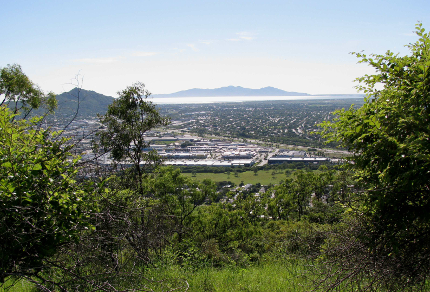Last evening, the Townsville mountains and hills painted clean, black shapes against a darkening sky washed with gold and orange by the setting sun. This morning, in the fresh light of blue sky and early sunshine, Vilis and I hiked up Mount Louisa, completing the jaunt we had planned for last Saturday, but aborted due to torrential downpours. Leaving the Kia at the end of Bayswater Road, we followed heavily-eroded 4WD trails gouged deep by the rains, up through open savannah woodland broken by rock outcrops and cliffs.
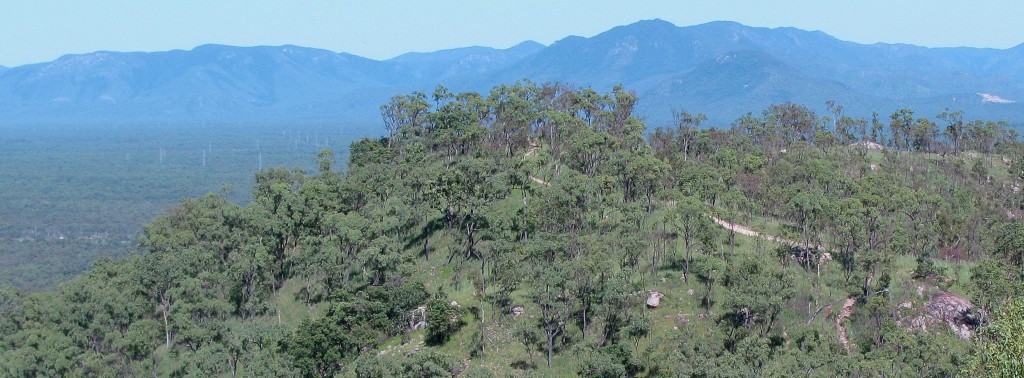
Mount Louisa, showing Trail (© Vilis Nams)
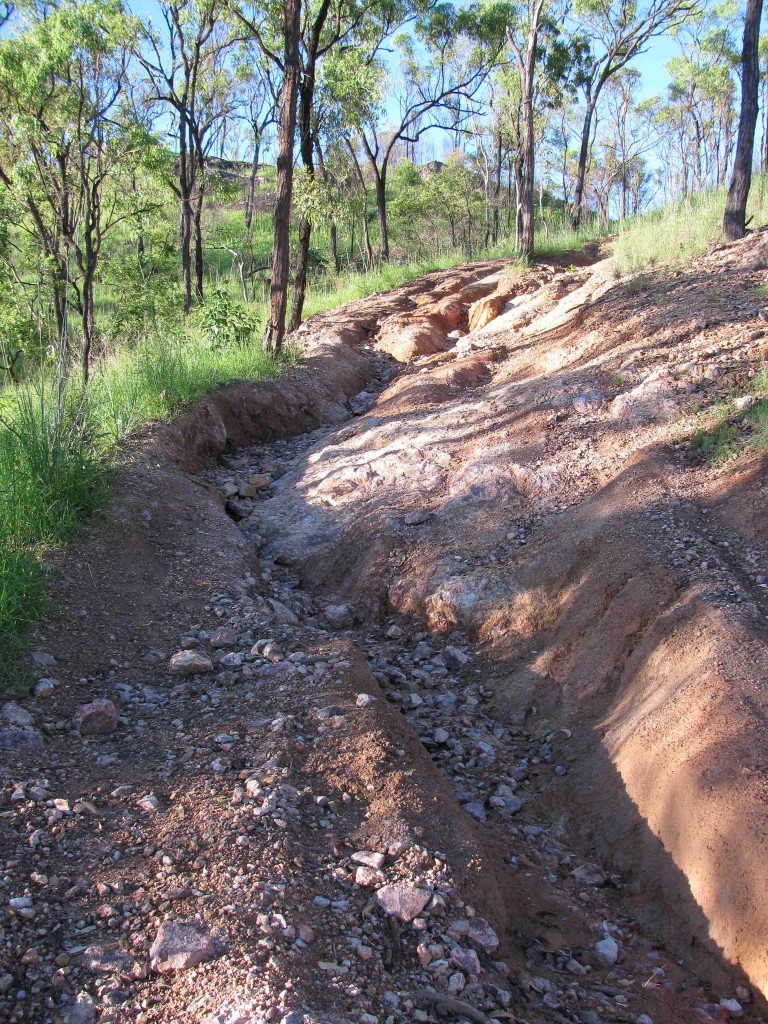
Eroded Track on Mount Louisa (© Vilis Nams)
Faint, husky calls of pheasant coucals and red-tailed black-cockatoos accompanied us, and a male pied butcherbird burst into clear, flute-like notes from a treetop beside the trail. A welcome breeze brushed away flies, and fork-tailed swifts soared on higher winds, dipping and skimming along over the scrubby woodland on one of Mount Louisa’s series of hilltops.
On the trail, which narrowed progressively as we hiked higher, loose stones and coarse gravel shifted underfoot with nearly every step, except where bare bedrock lay exposed and offered firmer substrate. After rolling my left ankle near the start of the hike, I stepped cautiously.
The grasses that formed the groundcover between scattered eucalypts grew in small clumps or tussocks on the stony soil. Some pushed leaf blades up to waist height or higher, and a pale green grass with deep purple flowers raised its flowering stalks higher than my head. Among the grasses, we spotted lush red and white hibiscus blossoms, as well as wildflowers we didn’t recognize.
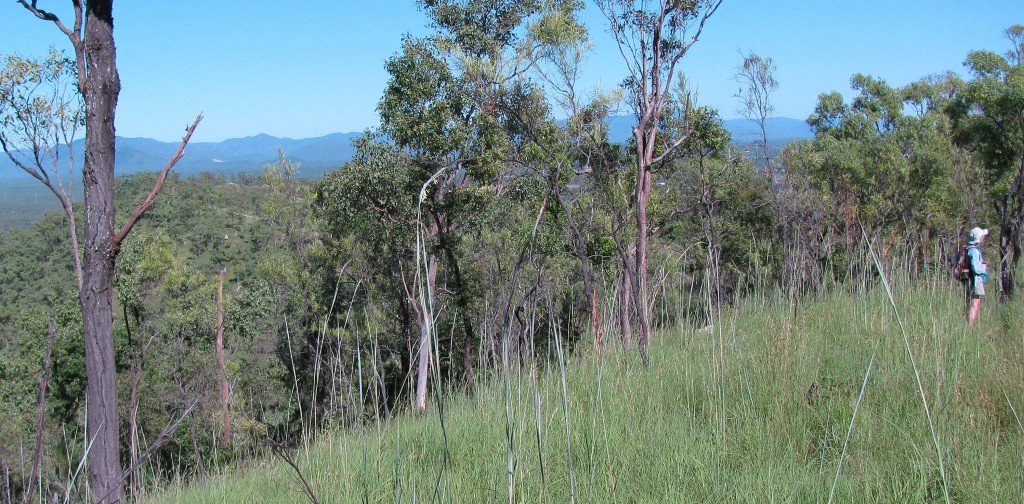
Here I’m in Tropical Savannah Woodland on Mount Louisa (© Vilis Nams)
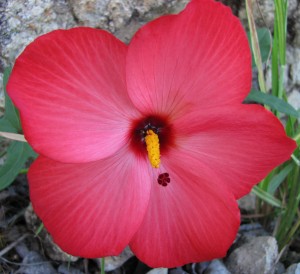
Red Hibiscus (© Vilis Nams)
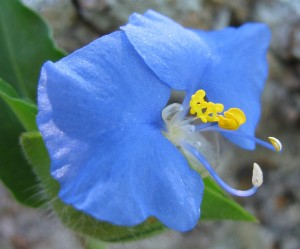
Wildflower (© Vilis Nams )
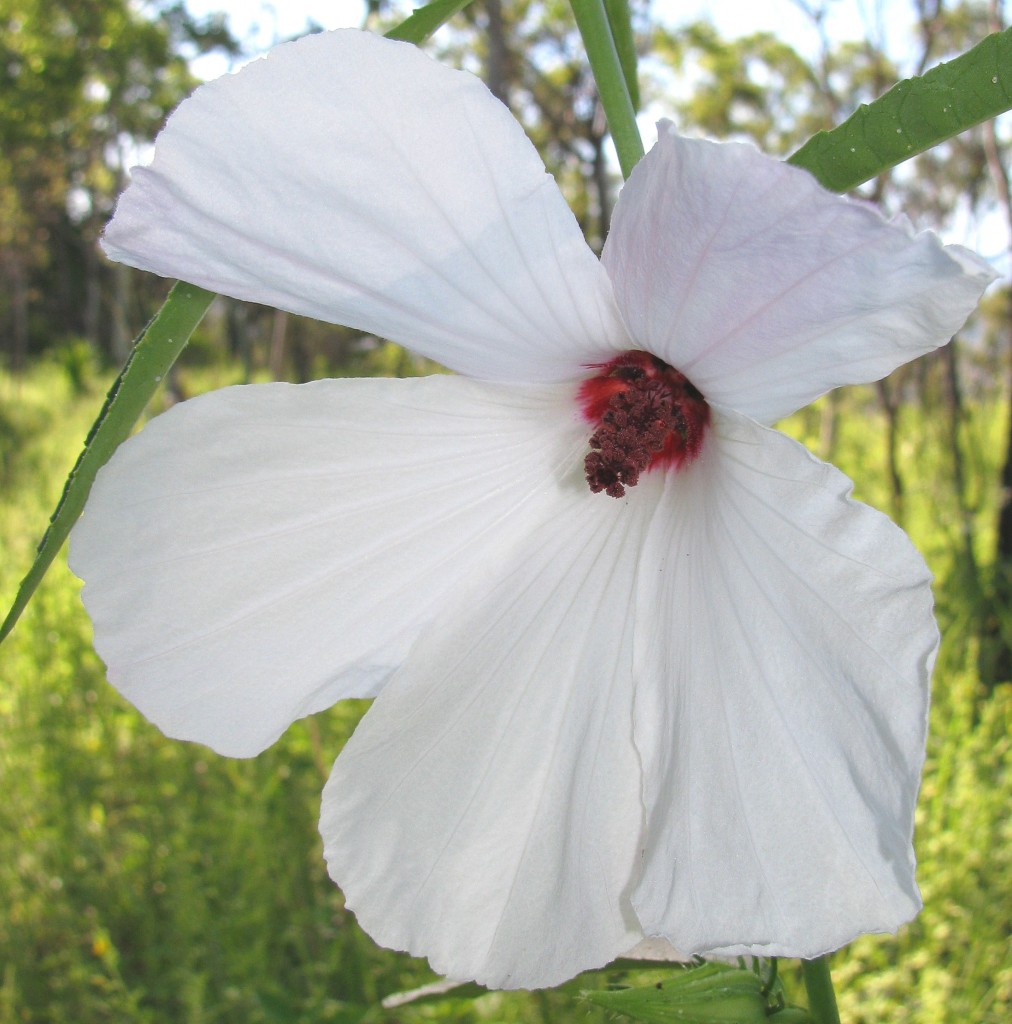
White Hibiscus (© Vilis Nams)
From the series of hilltops on the long, high hill, we looked out over suburbs spreading to the east and south and an industrial area and the airport to the north. To the west of the city, wetlands formed blue smears against the green of the floodplain, and offshore, Magnetic Island rose in dark peaks above the shimmer of the ocean.
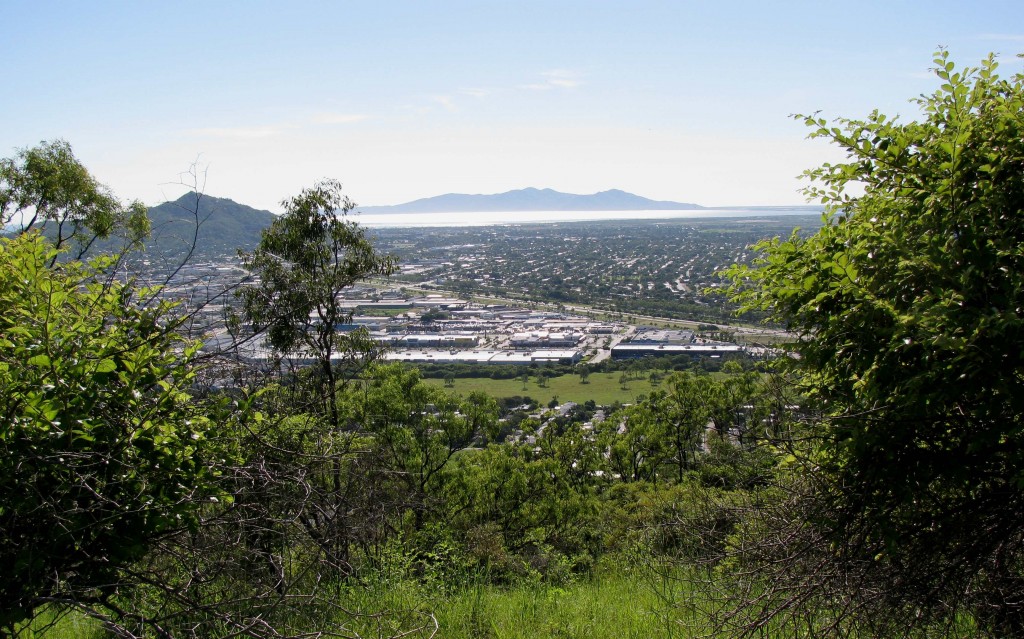
View Northeast from Mount Louisa, including Townsville, Castle Hill in back left and Magnetic Island in centre back (© Vilis Nams)
From our vantage point in western Townsville, we saw familiar peaks from different angles – Castle Hill silhouetted as a nearly conical peak, the long, western leg of Mount Stuart rumpled and dented with ridges and valleys, and the Many Peaks Ranges closer and clear, their angled, parallel ridges lit by morning sun. To the west, Herveys Range reared up against the sky, and for the first time, Vilis and I truly saw how Townsville is tucked against the ocean and walled off from much of the rest of North Queensland by barriers of low mountains.
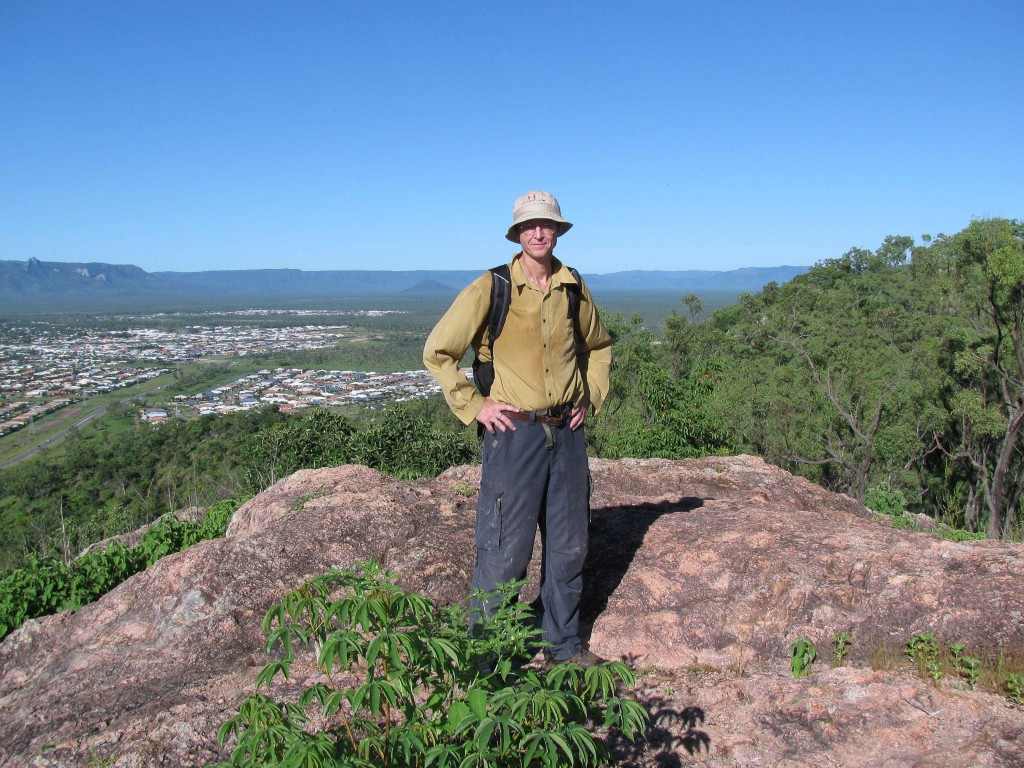
Vilis and View of Southwest Townsville, from Mount Louisa (© Magi Nams)
City sounds permeated the air and blended with, or in the case of a revving motorbike, outcompeted, the songs of crickets, the bubbly calls of fork-tailed swifts, and the rasping trumpet tones of a dozen red-tailed black-cockatoos that flapped majestically into a pair of tall gums and then dropped into the sky to glide elsewhere.
Vilis startled an allied rock wallaby into fleeing from us, the rope-tailed, rusty-furred macropod speeding away with its characteristic low, ground-eating bounds. Butterflies, particularly small grass yellows and clear-winged swallowtails, flitted over the grasses and herbs, and many more grasshoppers than we had so far seen on our excursions leaped extraordinary heights and landed around our feet on the trail.
For three and a half hours, we hiked that range of rounded hills, drinking in views of the floodplain caught between mountains and ocean and cluttered with city, and of the savannah woodland with its scattered eucalypts, its rare shade, its stony, ankle-rolling ground in which tenacious plants clung to thin soil and created habitat for Australian frogs, birds, insects, and mammals.

Tropical Savannah Woodland Habitat (© Vilis Nams)
Today’s fauna: pheasant coucal, red-tailed black-cockatoos, pied butcherbird, *fork-tailed swifts, spangled drongo, black-faced cuckoo-shrike, helmeted friarbird, sulphur-crested cockatoos, rainbow bee-eaters, *ornate burrowing frog, allied rock wallaby, clear-winged swallowtails, grass yellows. (*lifelist sighting)

